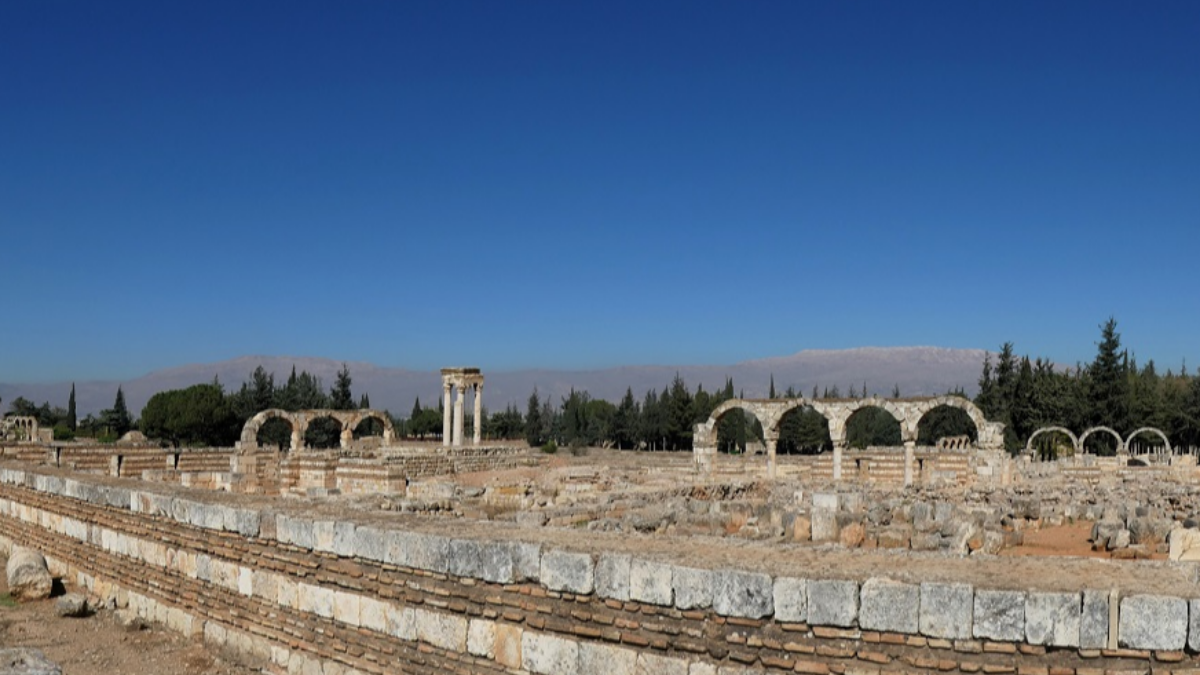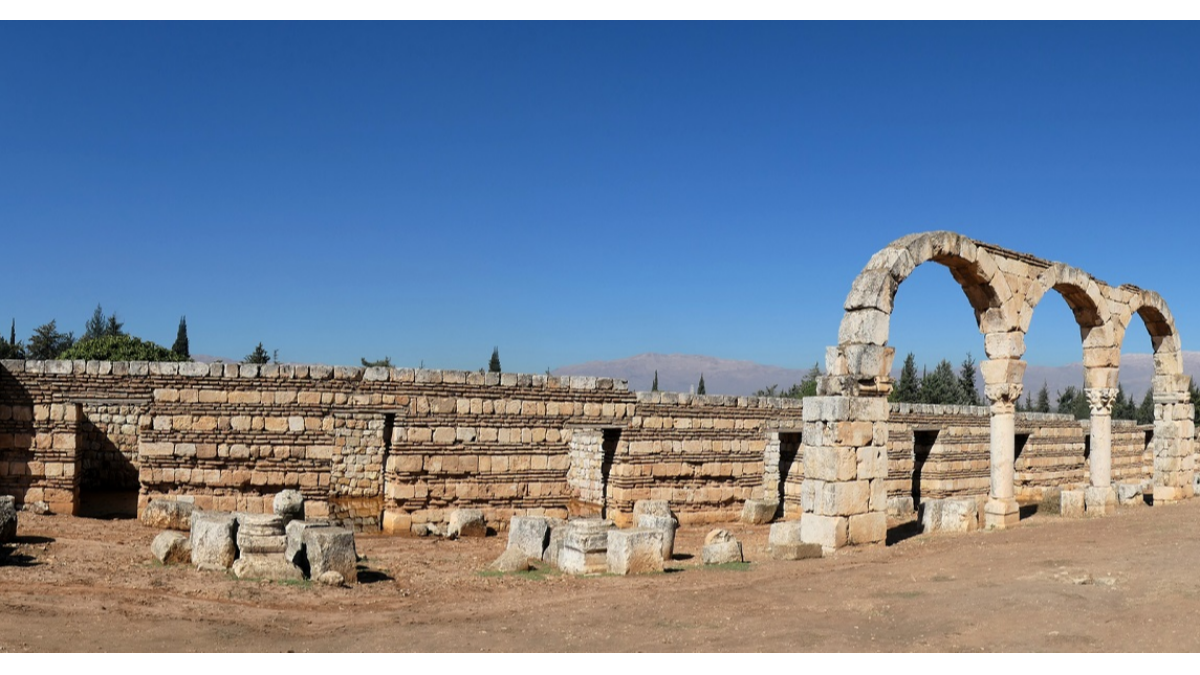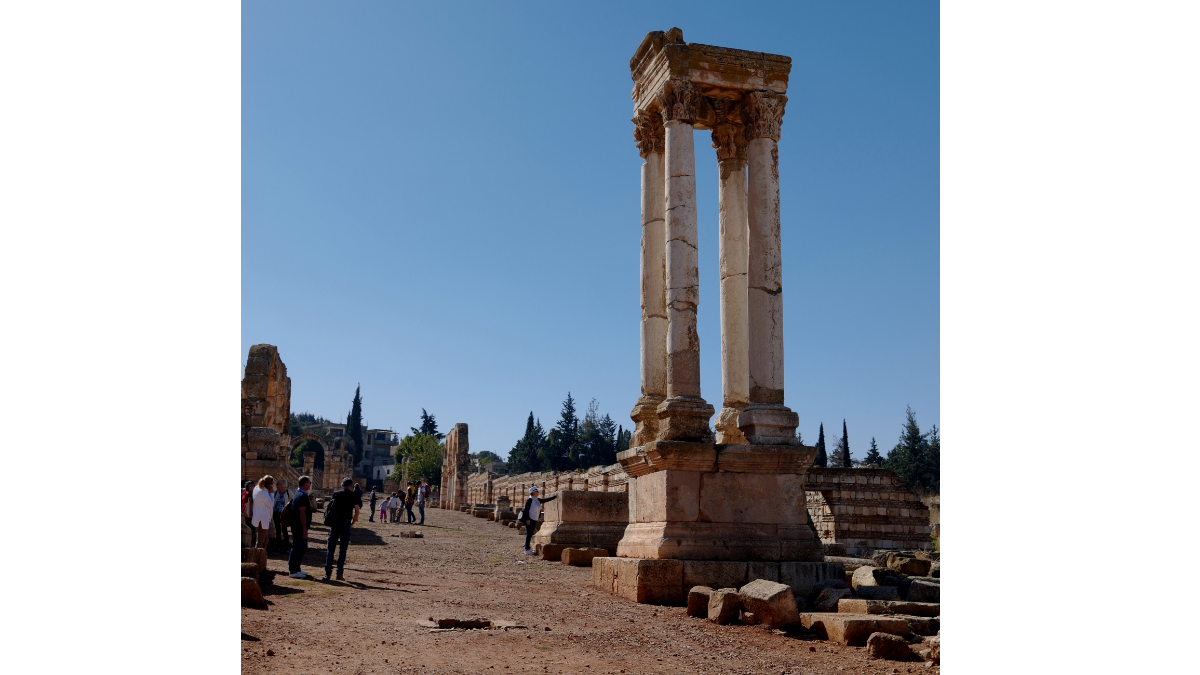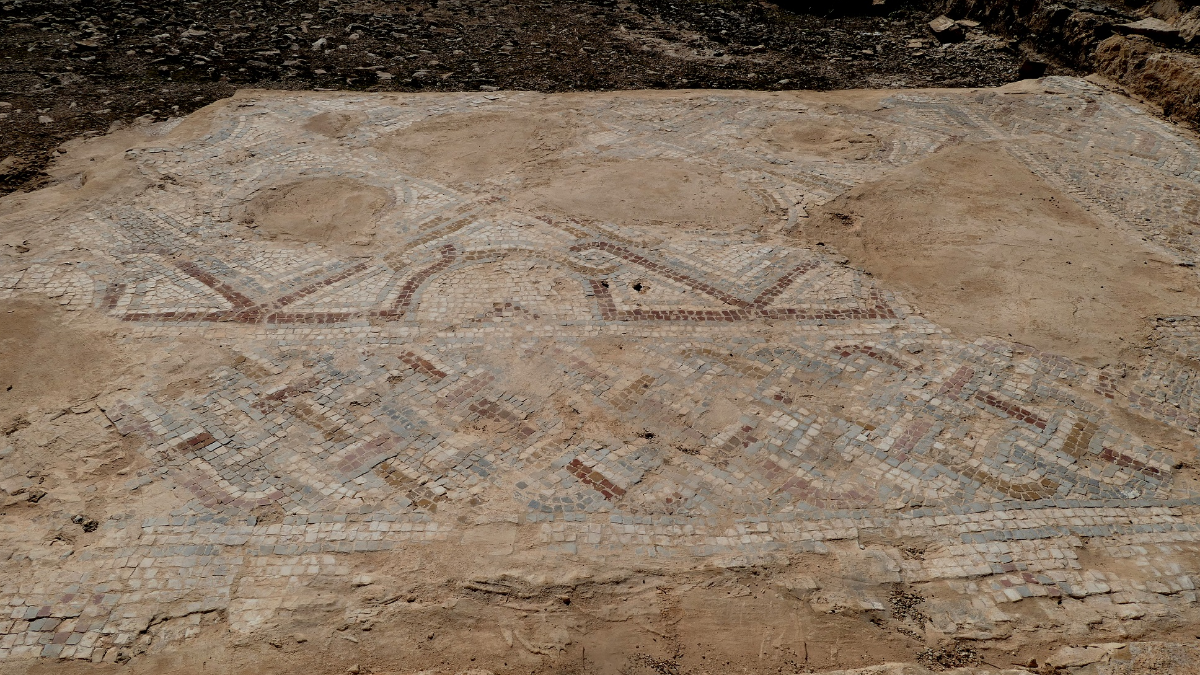
20210920
<La Vie Tang>A Lost Dynasty

Lebanon houses many historical cities and sites. As the country had been governed by different dynasties in different periods, vestiges from different civilizations that Lebanon treasures are inextricably associated with each other. However, my destination Anjar is entirely different without parallel in history and future. The tour guide introduced it the site from the flourish Arabian Umayyad dynasty that retains the architectural structure as a Umayyad city since no other civilizations overlapped during that time.
With an archaeological intention, I arrived at the Anjar Ruins Park about 58 kilometers east of Beirut that lies in the Bekka Valley separated from Syria only by a mountain and has been included in the World Heritage List in 1984. The committee of the World Heritage had a punchline about the place, ‘The city of Anjar was founded by Caliph Walid I at the beginning of the 8th century. The ruins reveal a very regular layout, reminiscent of the palace-cities of ancient times, and are a unique testimony to city planning under the Umayyads’.
Not a lot of visitors were found in the ruins park, perhaps because of the instability of the situation in the vicinities or lack of promotion from local tourism authorities, that its former prosperity is still concealed from many people. I want to learn more about its history, so read through information signs in the park carefully. The Umayyad dynasty, known as ‘the empire upholding white’, was once the first hereditary dynasty of the Arab Empire. Founded by the Umayyad family, the empire reached to its greatest extent between the 7th and the 8th century, its territory covering Central Asia, the Arabian Peninsula, the entire southern Mediterranean coast of North Africa.
Unfortunately, the dynastic prosperity lasted less than a century from 661 AD to 750 AD. The Umayyad governance of merely 89 years that once dominated three continents, Asia, Europe and Africa, withdrew from the arena of history due to excessive campaigns, the exhaustion of people and treasury, rulers’ extravagance and corruption, struggles for the throne and conflicts between Arab clans, all those resulted in the fatal decline of the dynasty. The fleeting glory of the Umayyad dynasty in history is greatly unexpected to historians for its fast rise and decay. At al times and in all countries, once a certain limit is reached, indeed, a change in the opposite direction is inevitable, and the historic rule seems working for all dynasties. Fortunately, the existing dynastic ruins the largest in scale has been left to provide archaeological vestiges to self-prove its former affluence and prosperity.
Geographically, Anjar was an inland business center at the intersection of the Damascus and southern silk trade routes. Anjar's construction was commenced from about 714 AD, but had not yet been fully completed. In 744 AD, it was destroyed and abandoned. Covering an area of about 114,000 square meters, the ruined city is roughly square, walled by two-meter ramparts from four sides, containing city gates and 40 watchtowers.
Two main cross streets run through the entire city, dividing Anjar into four areas, the design of a typical Roman urban planning. A pavilion-like structure stands on each corner of the intersection of the main street, and one restored building of the four has a stone base visible at the bottom with four pillars erecting, which featuring the Roman urban construction.
Calculated by researchers, there were more than 600 shops on both sides of the main streets. In front are a number of arches, and across the restored arches, it is obvious that these pillars vary in thickness and style. There are remains of palace, Arabian public baths and mosques. The palace with two adjacent arches strikingly stands out of the ruins of low walls, collapsed pillars and scattered objects.
The guide specifically pointed out that the buildings in the city are constructed by stones but in some parts bricked can be found between the stones. The main purpose of this special design is not for decoration but actually the precautions against earthquake, acting as a cushioning in the event of the disaster. The tour guide also mentioned that craftsmen were used to marking individual signs on the stones during the urban construction so as to distinguish the exquisite skill superior to others, very interesting.
Today, Anjar is populated by around 3000 people, Armenian descendants for the most. Retrospectively, the Ottoman Empire carried out a genocidal massacre against Armenians between 1915 and 1919, the death toll reaching up to 1.5 million. To escape the massacre, many Armenians fled to Lebanon, and today there are more than 200,000 people accounting for 4% of Lebanon’s population. There were thousands of people who had fled here in those days, and after spending an extremely difficult time, they finally rebuild their homes and cultivate the valley swamps of Anjar into green fields.
In history, the god of destiny always makes fools of the people. Over the past decades, continuous wars in neighboring Syria forced batches of refugees to make arduous journeys to Anjar where becomes an asylum once again. The number of Syrian refugees in Lebanon has reportedly reached to more than one million and at least 200,000 to 300,000 refugees are stranded in the site area. When I looked out of the window on my return journey from Anjar, I found messy tents everywhere on the road, rather rough and miserable. For those refugees forced to leave their homes, I believe they must eagerly look forward to one day when the motherland will regain peace and allow them to return homes.
Jibran Khalil Jibran, a famous patriotic poet of Lebanon, wrote an emotional prose poem about his motherland,
You have your Lebanon,
I have my Lebanon.
You have your Lebanon and its difficult problems,
and I have my Lebanon and its grandeur.
Your Lebanon is an attempt to unravel the political knot of time,
and my Lebanon is lofty mountains towering into blue skies.
Your Lebanon is diverse sects and political parties,
and my Lebanon is a teenager who climbs rocks, chases streams, and plays ball games in the square.
Tang Yu Lap Hantec Honorary Chairman










Unparalleled ruins of the Arabian Umayyad dynasty
Previous Article
Extended Reading
<Arts Talk>Vintage and Non-vintage Champagne
BY Group Branding and Promotion FROM Hantec Group
2018年林岳風主席新年話語
BY Andrew lou FROM Hantec Group
<Corporate Sandwiches>Mental Model (2): Capabilities and Concepts
BY Group Branding and Promotion FROM Hantec Group
5th Floor, 34-36 Gray’s Inn Road, London WC1X 8HR
(44) 20 4586 8213
Unit 4614, 46/F, COSCO Tower, 183 Queen’s Road Central, Hong Kong
(852) 2545 5065 / (852) 2214 4188
Units 4609-4614, 46/F, COSCO Tower, 183 Queen's Road Central, HK
(852) 2214 4101